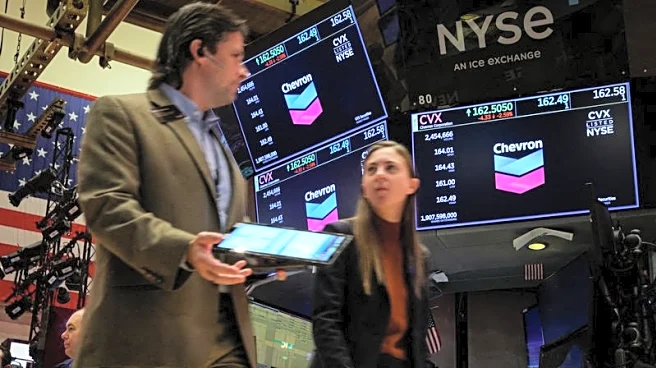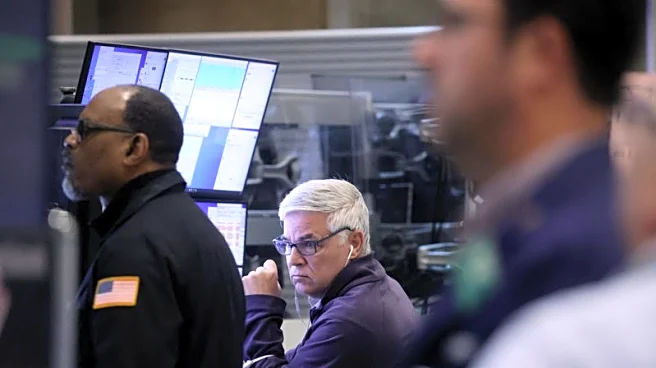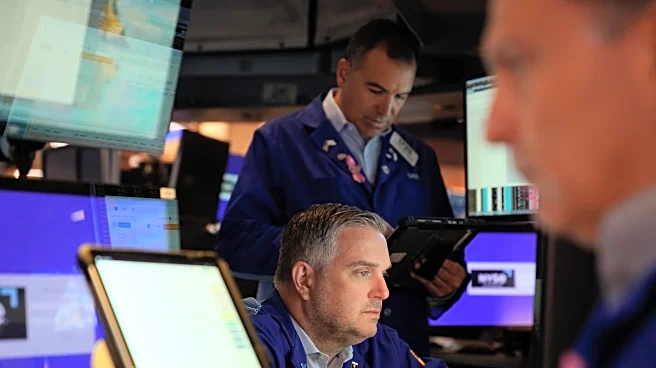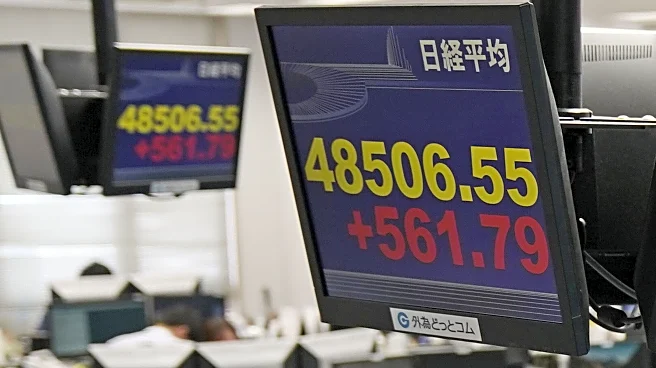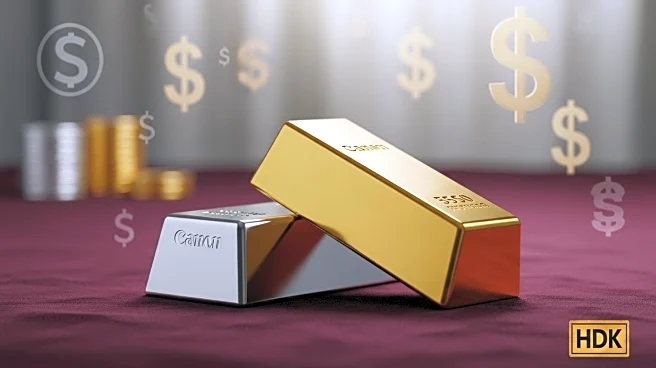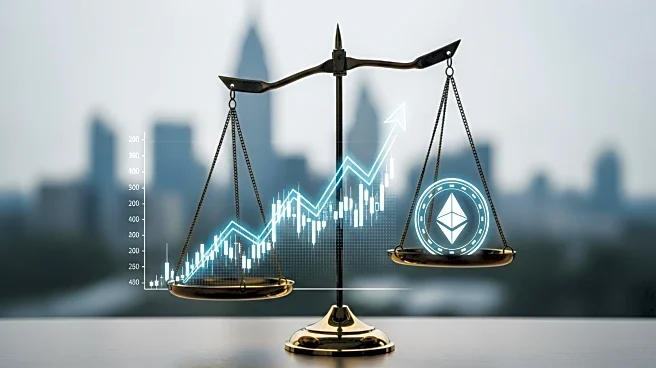What's Happening?
Gold prices have surged to near-record levels, driven by expectations of a Federal Reserve rate cut and ongoing safe-haven demand due to the U.S. government shutdown. Spot gold increased by 0.4% to $3,978.01 per ounce, nearing the $4,000 milestone, while U.S. gold futures for December delivery breached the $4,000 mark for the first time. The rally is attributed to a mix of factors including anticipated interest rate cuts, political and economic uncertainty, central bank purchases, and inflows into gold ETFs. The U.S. government shutdown, now in its seventh day, has delayed key economic data releases, prompting investors to rely on alternative data sources to predict the timing and scale of Fed rate cuts. Additionally, political instability in France and Japan has affected currency and bond markets globally.
Why It's Important?
The surge in gold prices highlights the metal's role as a safe-haven asset during periods of economic and political uncertainty. The anticipated Federal Reserve rate cuts could lower borrowing costs, potentially stimulating economic activity but also signaling concerns about economic stability. The ongoing U.S. government shutdown exacerbates these uncertainties, affecting investor confidence and market dynamics. Central banks, including China's, continue to bolster their gold reserves, reflecting a strategic shift towards tangible assets amidst global financial volatility. This trend could influence U.S. monetary policy and international economic relations, impacting stakeholders from investors to policymakers.
What's Next?
Investors are closely monitoring the Federal Reserve's upcoming meeting, where a 25-basis-point rate cut is expected, with another cut anticipated in December. The resolution of the U.S. government shutdown remains uncertain, potentially prolonging market volatility. As gold approaches the $4,000 mark, further central bank purchases and ETF inflows could sustain its upward trajectory. Market participants will also watch for developments in France and Japan, which could further influence global financial markets. The evolving situation may prompt strategic adjustments by investors and policymakers alike.
Beyond the Headlines
The current gold rally underscores broader economic and geopolitical shifts, including the increasing reliance on non-yielding assets during low interest-rate environments. This trend reflects deeper concerns about global economic stability and the effectiveness of traditional monetary policies. The U.S. government shutdown highlights vulnerabilities in political governance, potentially affecting international perceptions of U.S. economic leadership. Long-term implications may include shifts in investment strategies and central bank policies, as nations seek to mitigate risks associated with economic and political uncertainties.

